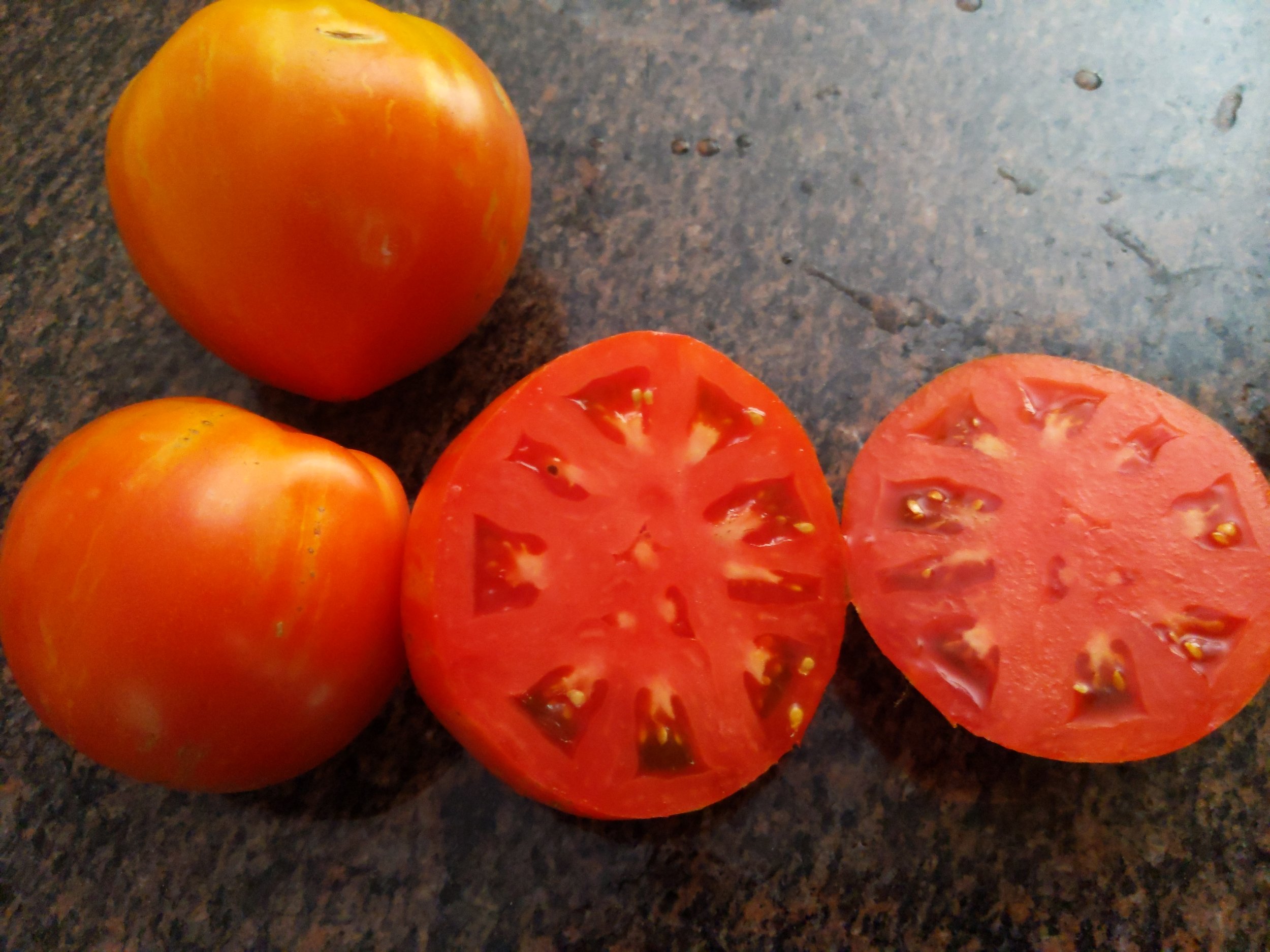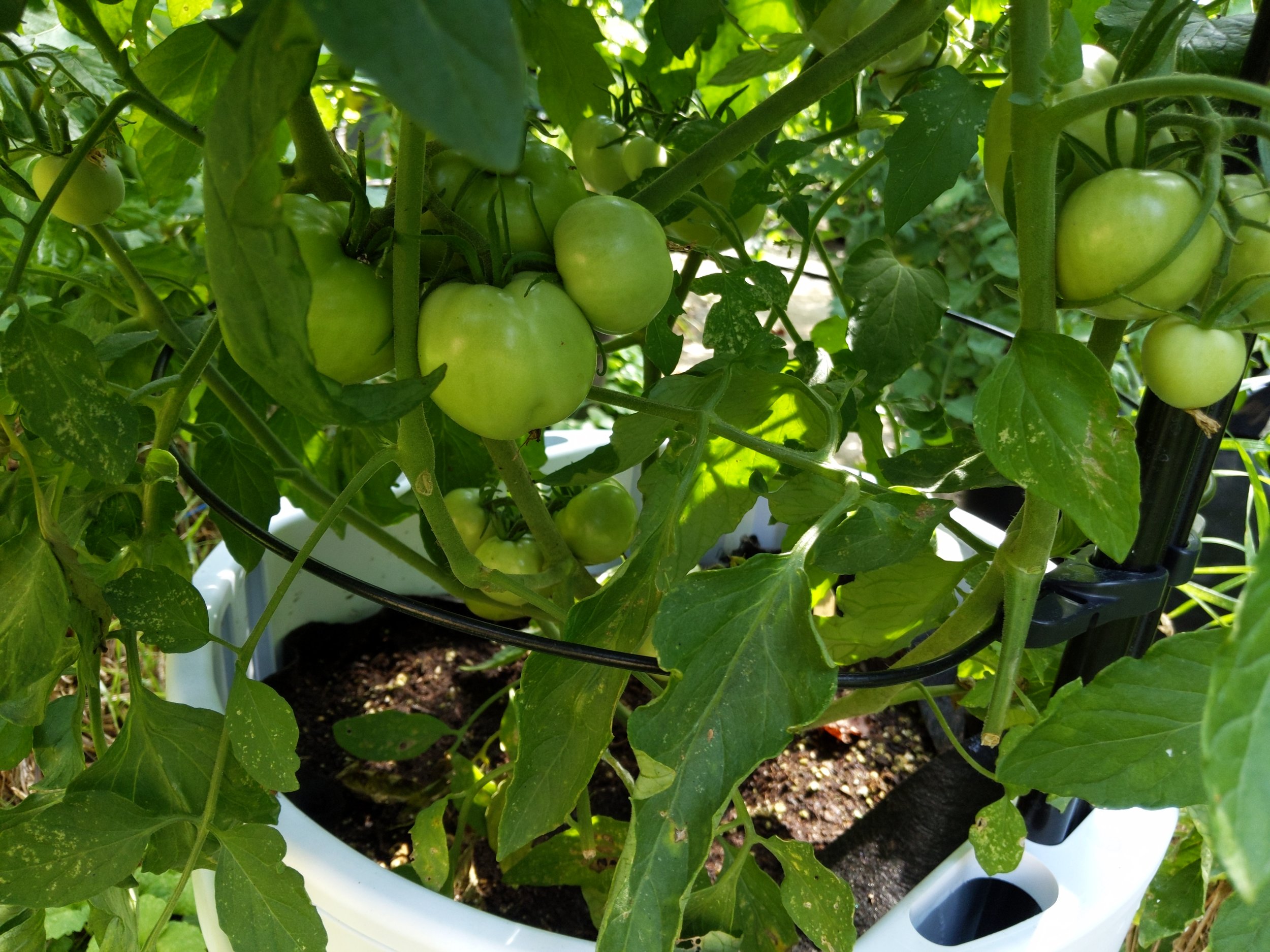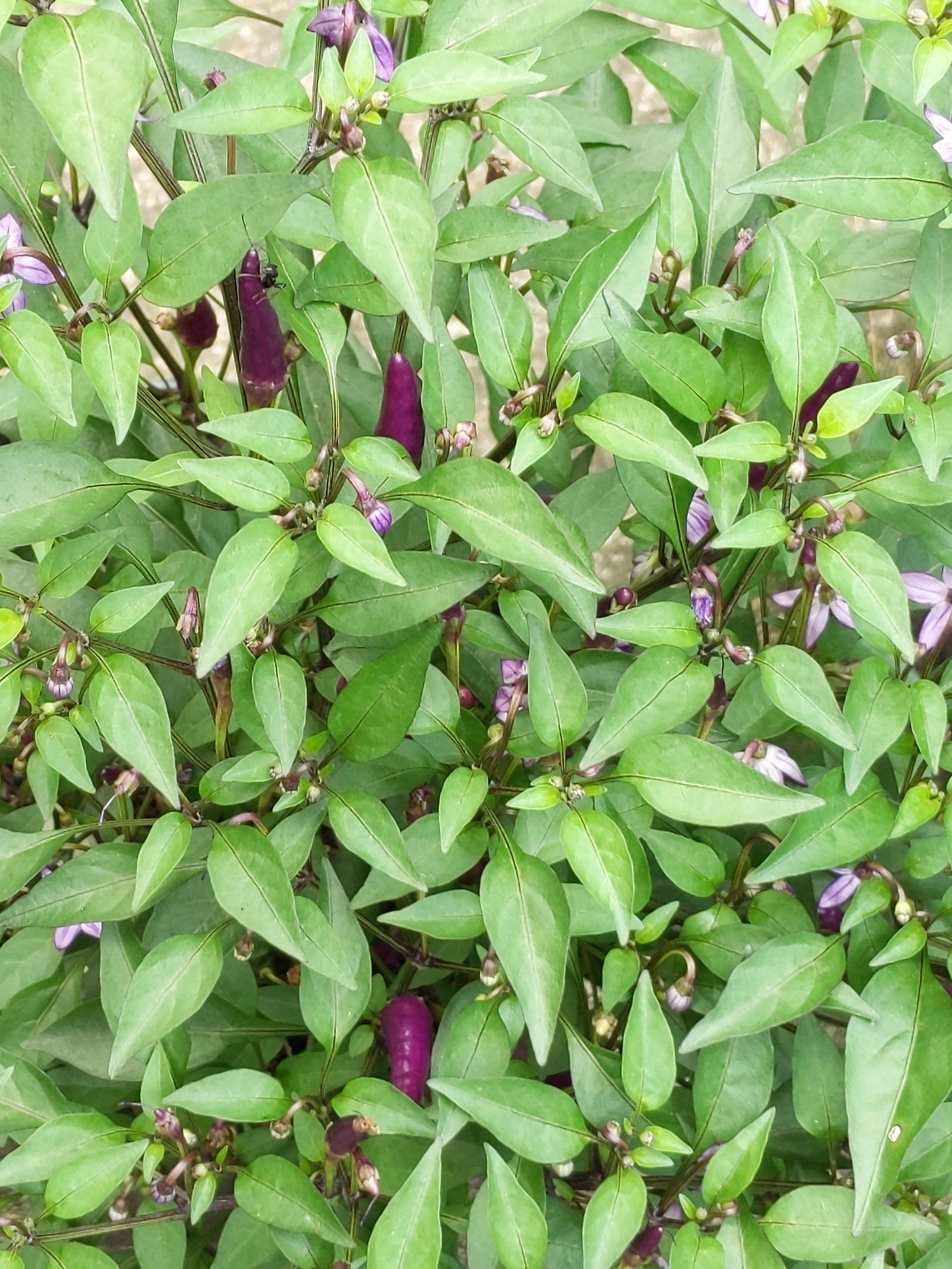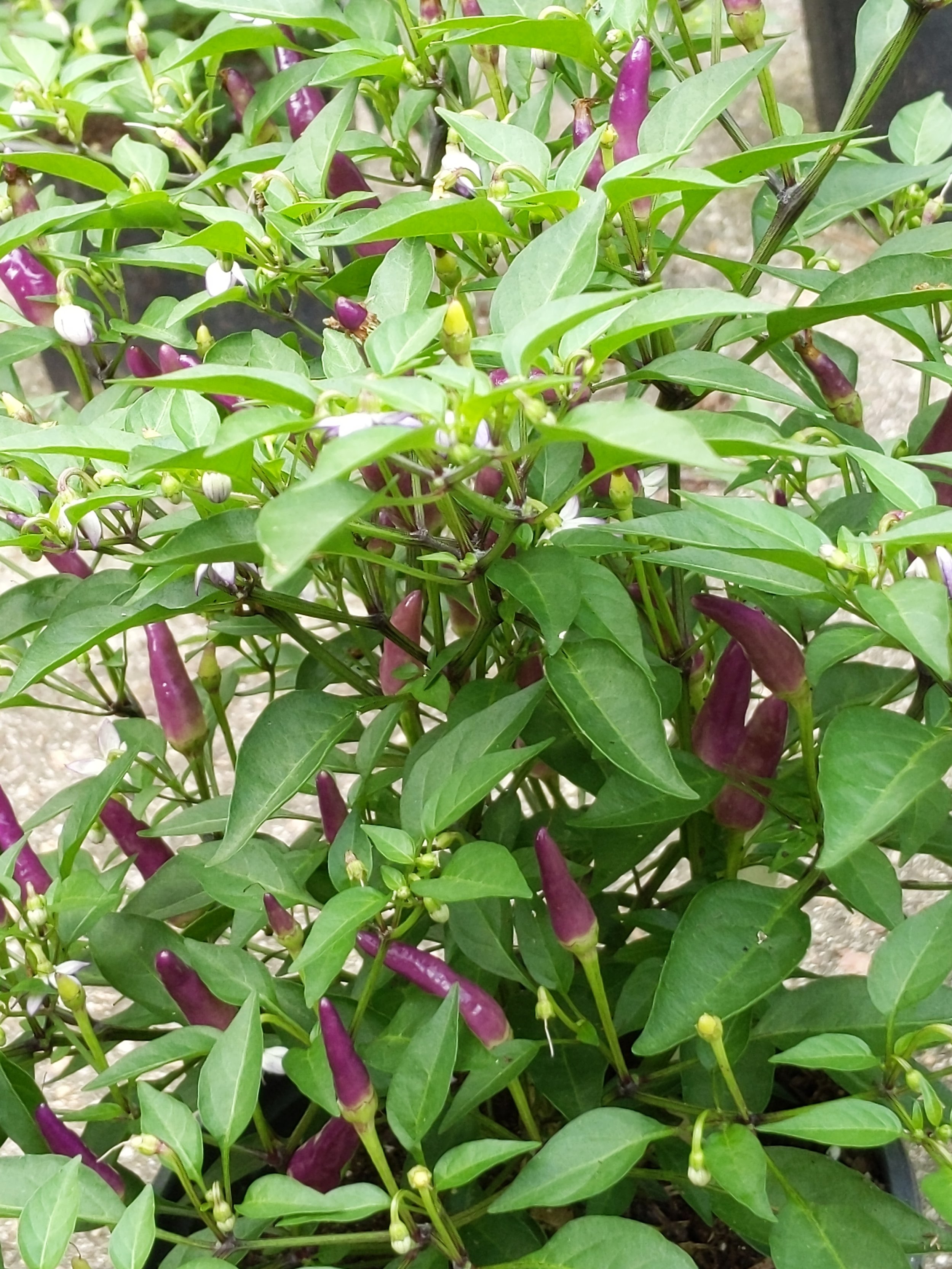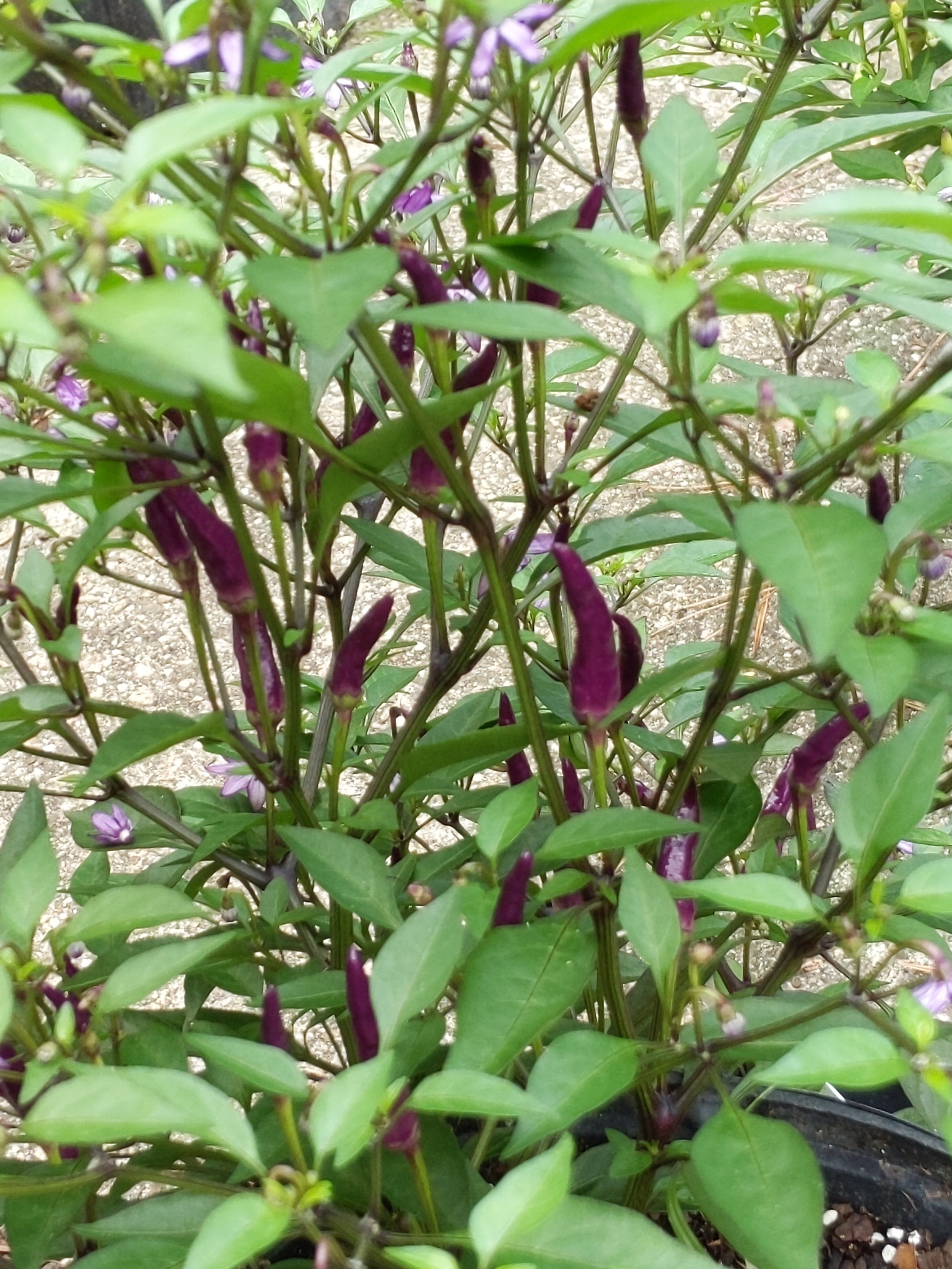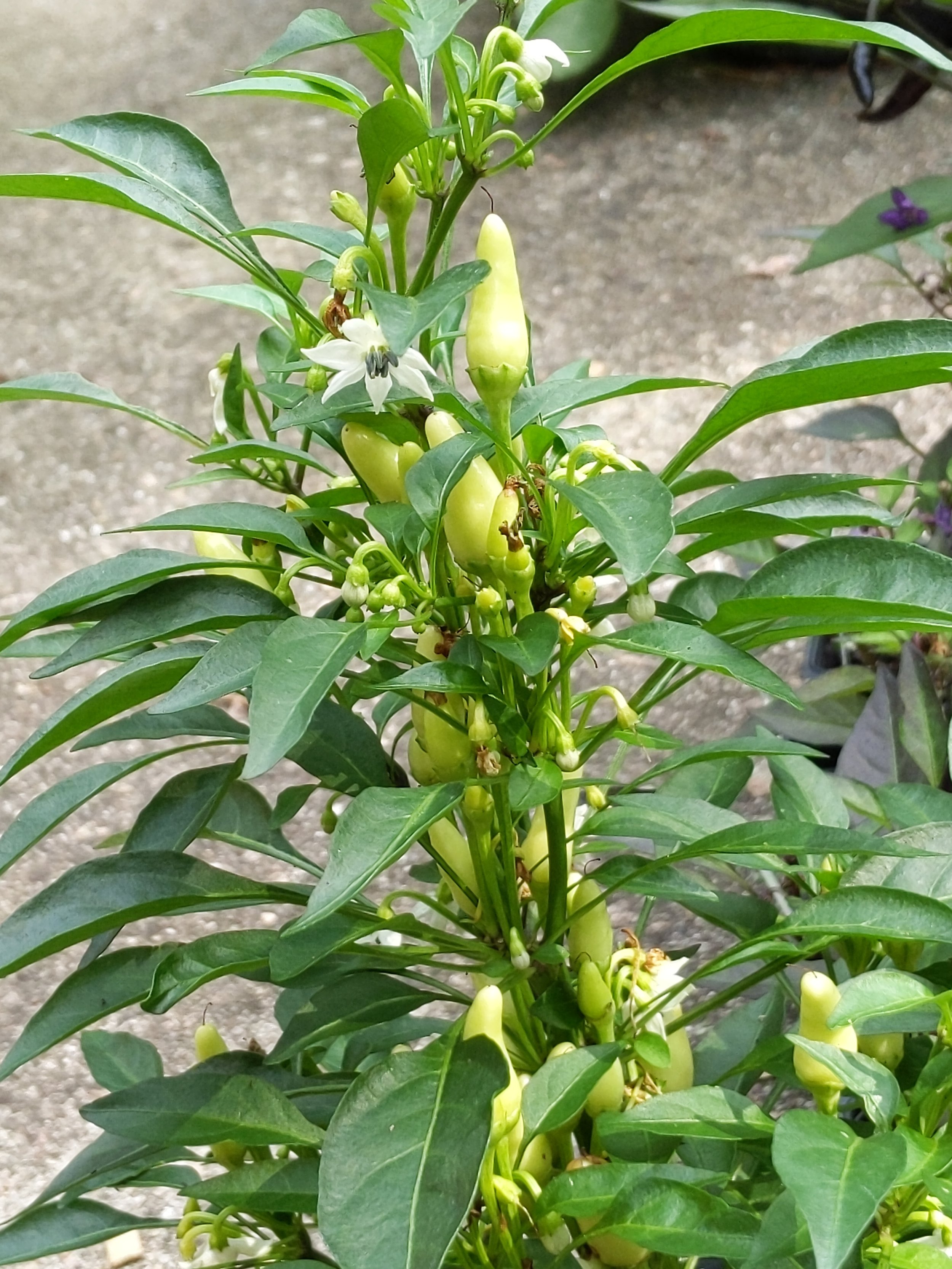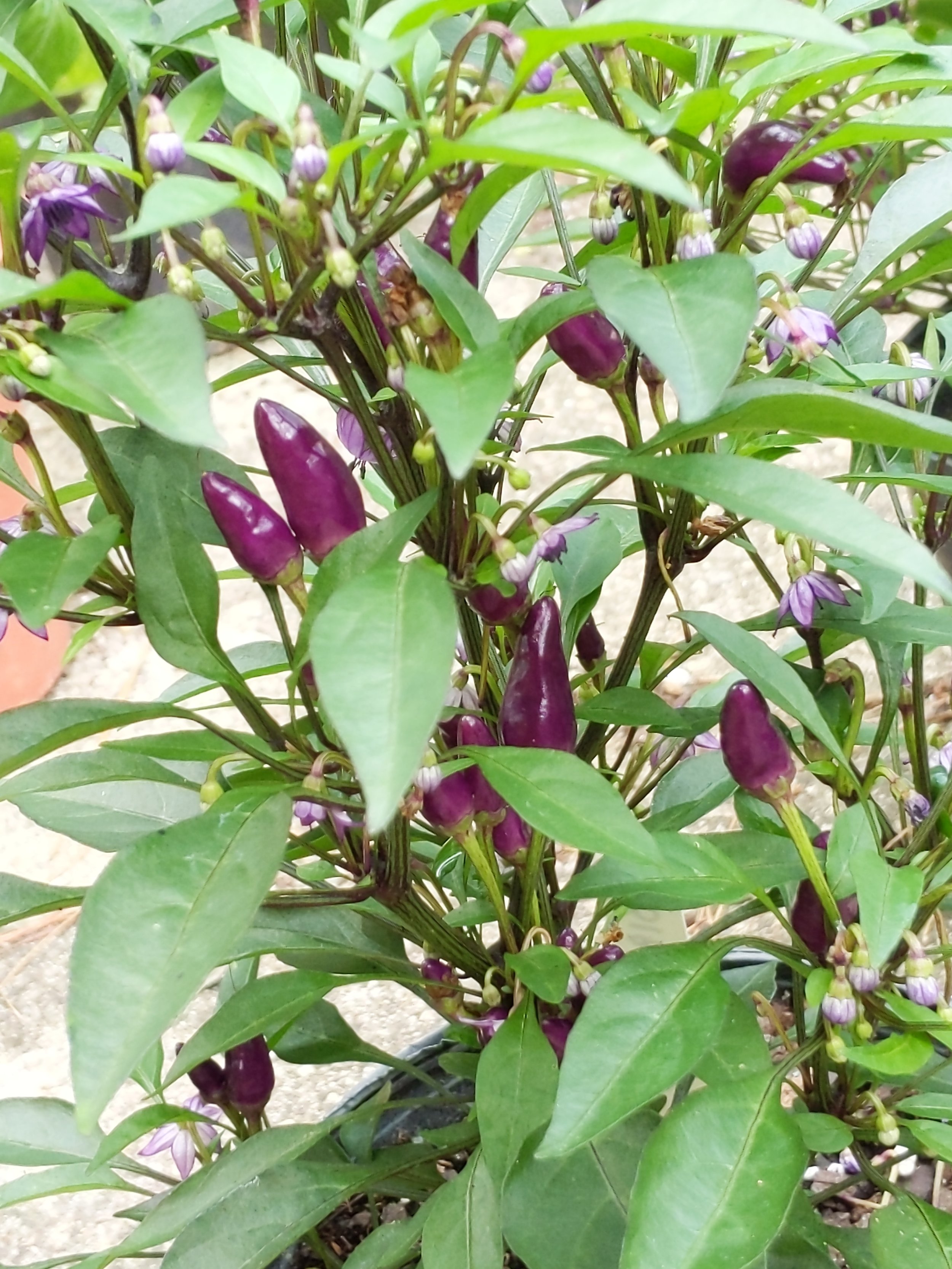First ripe Dwarf Melanie’s Ballet from July of this season
Now I am going to move on to the releases from 2015 - there are a slew of them….here we go! Remember - the asterisk * means they are a favorite of mine.
Adelaide Festival * - We have three purple with stripes (green to golden) offerings - this, Fred’s Tie Dye (different family) and Tennessee Suited (same family as Adelaide Festival). I am not convinced that they are two distinct varieties, or rather two very similar, very slight variations that may end up getting collapsed into a single variety. That will actually be a theme involving several of our releases from the same family - are they actually two different varieties, or just selections made on seasonal impact? Anyway - back to Adelaide Festival - it is a real beauty, lovely stripes, excellent yield and fine full flavor, hence inclusion onto my favorites list.
Dwarf Lemon Ice - The same remarks made in my last blog when discussing Lemon Ice’s cousins - Pink Passion and Golden Heart - hold here. I love the “icy” bright yellow color, nearly white flesh, early productivity, excellent reliable fruit set. The flavor doesn’t have quite the impact on me, but as in all of those I am downgrading a bit on flavor, it is time to revisit. This is actually a splendid canning or sauce tomato due to its dense meaty flesh and nice medium size.
Dwarf Mahogany - I’ve far too little experience to be confident in fully grading it. My best experience was during the selection phase where it really stood out at Tomatopalooza, grown by my friend Lee and brought to the event. I’ve been less lucky with it the few times I’ve grown it, in challenging seasons, where it was pretty well ravaged by disease. I lump this in with Tasmanian Chocolate and Chocolate Champion and Maralinga when considering our chocolate colored medium to larger fruited releases. I know it has great potential, it is just that I’ve yet to experience it in my own garden..so, it is time to give it another shot!
Dwarf Russian Swirl - I was so excited to find this as the first of the good sized oblate yellow/red bicolored tomatoes with flavor on a par with the many indeterminate varieties such as Pineapple and Big Rainbow. It is on the tall size, resists disease well, is a heavy yielder…the color is of course outstanding, with variable swirls of red in bright yellow flesh. Flavor-wise, I have the same opinion of it as the indeterminate bicolors - only Lucky Cross and Little Lucky “do it for me” as far as taste excitement, but I know many gardeners who would appreciate the mild, sweet fruitiness of this one.
Dwarf Scarlet Heart - It took some doing, but we managed to stabilize the hardest color to narrow down in our project - red! Our project member Linda in California did a great job with all of the Nosey selections, and I consider this to be my favorite for flavor, having more “oomph” than the gold, yellow and pink members of the family already discussed. It sets fruit well, resists disease, has a nice medium size and heart shape and is just a fine tomato. The flavor won’t make you stop and pause, but it is perfect for all uses - a really good eating tomato that will also be at home in sauces or canned.
Kangaroo Paw Green - These are curious little tomatoes, the Kangaroo Paw series. I find them to vary as to disease susceptibility season to season, but they always set fruit and yield well. They are saladette sized tomatoes that don’t find as much use in our kitchen unless I am grilling or canning. I like the flavor of all three, and the yellow skin makes it unusual in our project for green fleshed varieties. I like it, but don’t love it.
Kangaroo Paw Brown - All of my comments for K Paw Green hold for K Paw Brown - healthy, prolific, attractive, and tasty, though for me not a best taste candidate. It is time for me to regrow all three and confirm or revise my assessment.
Kangaroo Paw Yellow - This and Red (coming soon) has been the most challenging colors to stabilize and nail down. I think we finally have reliable yellow fruit, and all comments for the other two K Paws, above, hold for Yellow.
Dwarf Orange Cream * - This is a curious one. The color is pretty unique, not quite orange, not quite yellow, and the surface is sort of matte, not shiny. I “found” the variety and named it, and haven’t returned to it very often. The flavor is outstanding, right there with the other Tipsy family releases (Sweet Scarlet, Golden Gypsy, Blazing Beauty). I’ve not grown it often, and haven’t always had luck with it when I did. It can stand with the very best in years when it is happy with the conditions, and it is time for me to give it another try.
Maralinga - There is a consistent theme with this set of dwarf releases; I simply don’t have tons of experience with many of them, including Maralinga. One year it was truly outstanding, others not so much - yield issues, disease issues. It has the potential to be among the best, however - a nice sized, chocolate colored tomato with high yields. Time for me to give it another try.
Dwarf Golden Gypsy * - I love this variety. It is one of the most consistent yielding of the Tipsy potato leaf releases, with nice sized medium yellow tomatoes of superb flavor (including that nice kick of tartness shown by most of our Tipsy family releases). The very pale yellow flesh is attractive as well. Certainly this is one of our finest varieties.
Waratah - Great reds are a bit lacking in our project. Waratah is what I call a somewhat inconsistent but very good red variety. I’ve had mixed results with my few grow outs, and wish to compare it to another red from the same family of similar size, Tanunda Red. I can’t yet say I love it, and in fact, need to convince myself that Waratah and Tanunda Red are distinct enough to be two different varieties (they are both from the Plentiful family).
Sturt Desert Pea - This release is a bit smaller than Tanunda Red and Waratah (all from the Plentiful family), but more consistent in yield and flavor. It is a fine medium sized red slicing variety that yields well, with a pleasant balanced flavor. I’ve not grown it very often and can’t really add any more.
BrandyFred - Similar to Dwarf Wild Spudlead, my experiences with BrandyFred are very limited. It is a potato leaf, good sized oblate purple tomato with excellent flavor, but I need to regrow it to add more details.
Tennessee Suited - See my comments on Adelaide Festival, above. Tennessee Suited has been a bit erratic for me, a few times excellent, a few times disease susceptible and not high yielding, though of fine flavor.
Lucky Swirl - Like Dwarf Russian Swirl, this is another of the classic red/yellow swirl bicolors with sweet, fruity flavors. I’ve had mixed results in terms of plant health and yield.
Tanunda Red - See my comments on Waratah above. Much more experience with this in my garden is needed to form any distinctive opinion beyond it being a very good medium sized red tomato. I need to convince myself that it is distinct from Waratah.
TastyWine * - This release has the potential to equal Brandywine in flavor, if not quite in size. I’ve found it to vary quite a bit season to season, and we probably could have done a bit of a better job selecting and stabilizing it before release, though that is just a possibility….variations I’ve experienced could simply be due to differing weather season to season. I’ve not grown it as often as I should, but those seeking a potato leaf dwarf with good sized pink delicious tomatoes should aim for this one in their garden.
Kookaburra Cackle - I have little experience with this, but it was a very positive one - lots of medium to medium small smooth oblate chocolate tasty tomatoes. We have so many releases, and there remains still so much work to be done, that once something is released I end up moving on to other things. Like many others released this year, it is time for Kookaburra to make a return to my garden.
Dwarf Wild Spudleaf *- I’ve actually grown this one quite a lot, and find it consistent in terms of yield, health and flavor - perhaps my top choice right now of potato leaf purple dwarfs. It gets rated among the best for me.
Loxton Lad - Do we have a Lad AND a Lass, or just a Lad OR a Lass? The original idea was that one of them has consistently larger fruit size than the other. As we are short on great orange fruited dwarfs from our project, there is great value in these varieties . They are relatively early, produce well, set fruit easily and the flavor, if not superb, is very, very good. We need feedback from those who are growing them to determine whether we have one variety, or two. I’ve grown each several times and although the seasons that they were in my garden weren’t great ones for dwarfs in general, they impressed, though did not rise to the very top.
Loxton Lass - See comments for Loxton Lad, above….input is needed.
Dwarf Crimson Sockeye - I’ve not had much luck with this, though I’ve only tried it once. It is a medium sized purple tomato, the flavor is nice, but the year that it was in my garden was a challenging one. Disease and poor fruit set meant little luck, so it is due for another chance soon.
First ripe Sneaky Sauce
Not very many from the above list merited an asterisk as my favorites - only 5 - and that is likely due to my relative inexperience with many of them. I have no doubt that some of the above varieties are underrated by me, and a look at Victory Seed Company’s dwarf page shows some of the above to be very well liked. I’d love to hear from those of you wishing to share your impressions about our dwarfs, actually - feedback is always lacking, and always welcome!
A new Salvia (Big Blue? Not sure of the name…more of a violet color, growing in a container, from my friend Ralph





